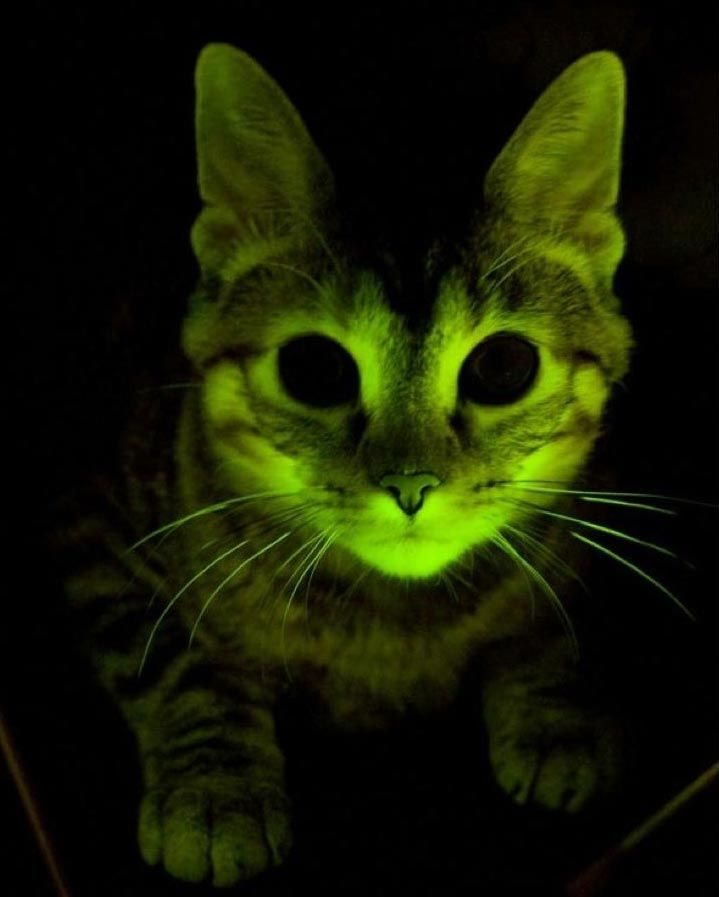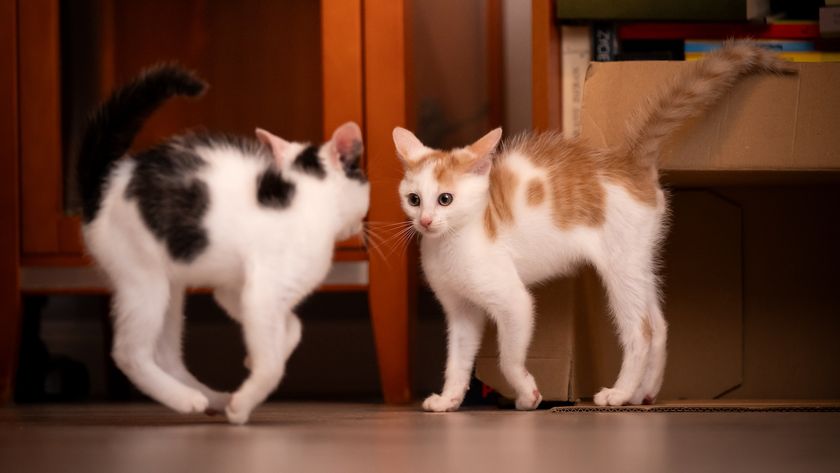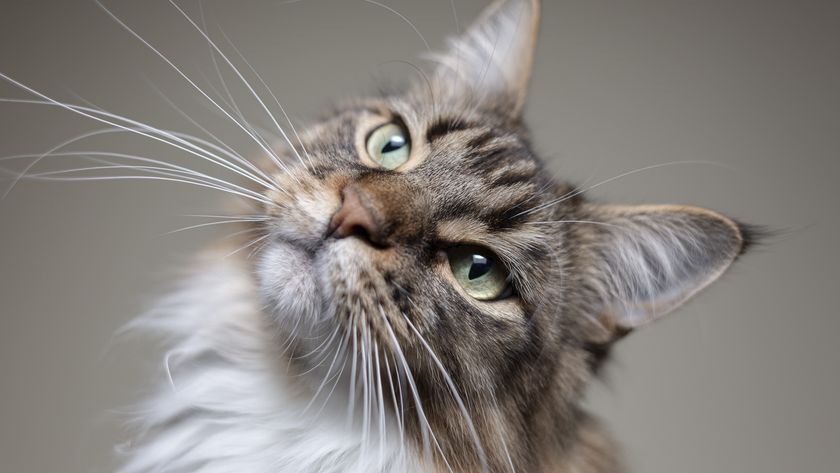Glow-in-the-Dark Kittens Lend a Paw to AIDS Fight

Cats that can glow in the dark from a new genetic engineering technique are helping scientists study molecules that could stop AIDS, researchers announced today (Sept. 11).
So far, the researchers have created three genetically engineered kittens that can glow green and pass this gene onto their offspring. They explained that cats are much better models for AIDS viruses than are mice and other animals. [See Images of the Glowing Kittens]
In addition to opening a window into the virus in humans, the cat research may end up helping the felines themselves, the researchers said.
Devastating AIDS pandemics
The world is currently facing two devastating AIDS pandemics— one in humans, the other in domestic cats. The viruses responsible, human immunodeficiency virus (HIV) and feline immunodeficiency virus (FIV), are highly similar.
"FIV causes AIDS with loss of infection-fighting T cells like HIV does in people, and cats get sick from virtually the same AIDS-defining opportunistic infections as humans who have untreated HIV," said researcher Eric Poeschla, a molecular biologist and infectious disease specialist at the Mayo Clinic College of Medicine in Rochester, Minn. [10 Deadly Diseases That Hopped Across Species]
As such, researchers have long wanted to genetically experiment with cats to better understand how to combat AIDS. To create genetically modified animals, scientists insert genes into their genomes, often using benign viruses as the delivery vehicles. Investigators commonly target the earliest possible stages in an animal's development so the gene gets installed into all of its cells — any later, and the gene can end up in some tissues but not others.
Sign up for the Live Science daily newsletter now
Get the world’s most fascinating discoveries delivered straight to your inbox.
Tinkering with cat genes
At first scientists created genetically engineered cats using cloning, which meant injecting a gene into one cell — from the skin, for instance — and then implanting the modified nucleus of that cell into an egg cell that had its nucleus removed; the resulting cell then develops into an embryo much like a fertilized egg would. In this manner, researchers generated felines that were either fluorescent red or green, a glow-in-the-dark cat being visible proof of the genetic engineering succeeding.
However, this kind of cloning is very difficult to perform, as it essentially involves delicate surgery on cells. In addition, the manhandling that both nucleus and egg experience and the "reprogramming" the nucleus undergoes from adult to embryonic status often leads to animals that might look normal but can have aberrations on the molecular and cellular level.
Now scientists have developed a new way to create genetically engineered domestic cats where they modify egg cells directly with viruses. The amount of genetic material they implanted within the cats was tiny — if the entire string of DNA that is the cat genome were unraveled and depicted as a highway reaching across the United States from New York to Los Angeles, the inserted material would be equal in length to one of the dashed yellow lines in the middle of the highway somewhere out in Nebraska, Poeschla said.
This efficient process, the first time sex cells of a carnivore have been genetically modified, led to embryos that robustly expressed the implanted gene without all the complexities cloning can involve. The result — three healthy kittens that glowed green when a blue light was shone on them and transmitted the gene to their offspring.
The researchers then applied this approach to investigating resistance to AIDS.
"We want to see if we can protect the domestic cat against its AIDS virus, if we can protect any species, eventually including ours, against its own AIDS virus," Poeschla told LiveScience. The aim of future treatments is a gene therapy that can introduce protective genes into people that help them fight off HIV, he added.[AIDS: A Winnable Public Health Battle?]
To do so, they created transgenic cats that generated or expressed antiviral proteins taken from rhesus monkeys. Such molecules can block retroviruses such as HIV and FIV.Preliminary results suggested cells from these cats grown in the lab resisted replication of the feline AIDS virus FIV, keeping it from spreading.
"We haven't shown cats that are AIDS-proof," Poeschla cautioned. "We still have to do infection studies involving whole cats. That the protection gene is expressed in the cat lymphoid organs, where AIDS virus spread and cell death mostly play out, is encouraging to us, however."
Millions of cats dying
The researchers stress their work could also help cats themselves, not just humans. Since FIV afflicts feral cats the most, the virus causes a lot of unwitnessed, unattended and unrelieved feline suffering, with millions of cats dying annually worldwide from AIDS, often painfully and alone. "Millions more suffer with chronic illness from the virus," Poeschla added. "Supporting this research can help cats as much as people."
Although this research on transgenic cats has so far concentrated on AIDS, there are many other diseases that cats and humans share that genetically modified felines could help shed light on in a way that mice and other experimental animals cannot.
"Some feline organs, such as the eye, are much more similar to humans than the same organs in mice," Poeschla explained. "The cat brain, particularly the cerebral cortex and vision-processing parts, is the best understood of any species." As such, transgenic cats "might be of help in understanding the workings of the brain and neurological diseases such as Alzheimer's, or with genetic illnesses and major eye diseases such as glaucoma or macular degeneration," he added.
The scientists detailed their findings online in the journal Nature Methods.
Follow LiveScience for the latest in science news and discoveries on Twitter @livescience and on Facebook.












